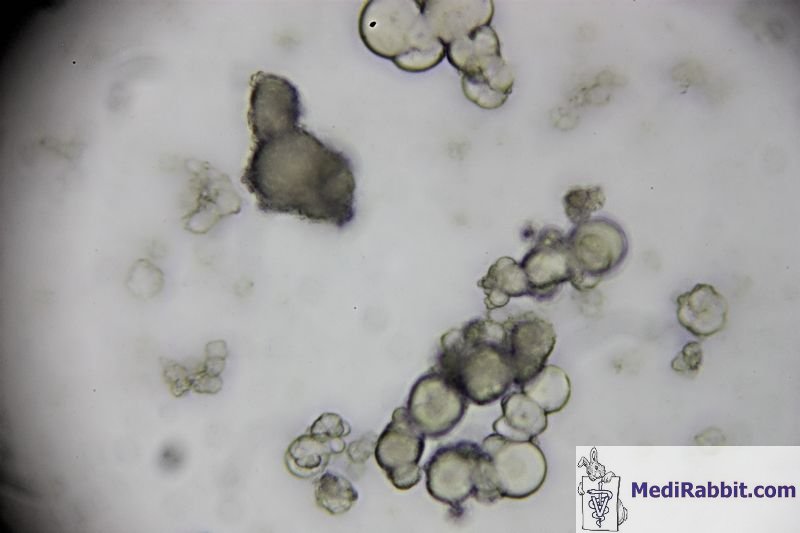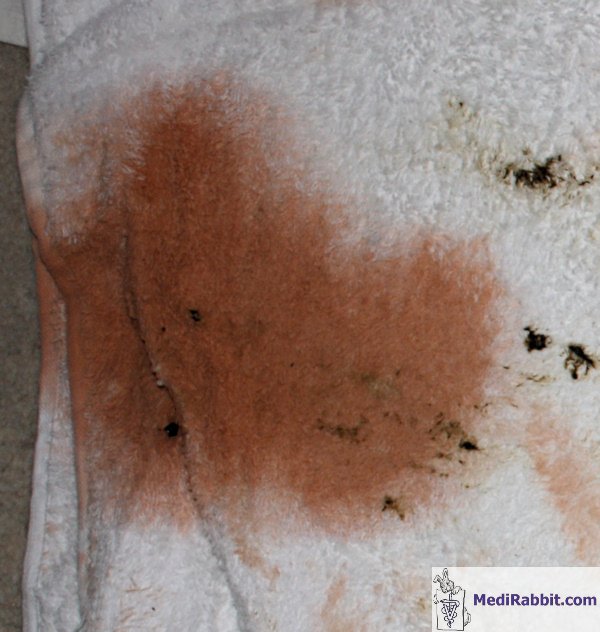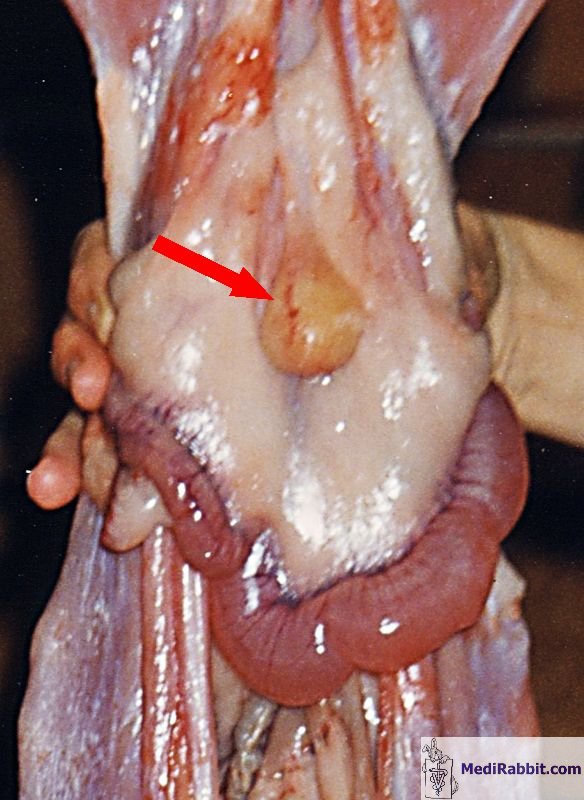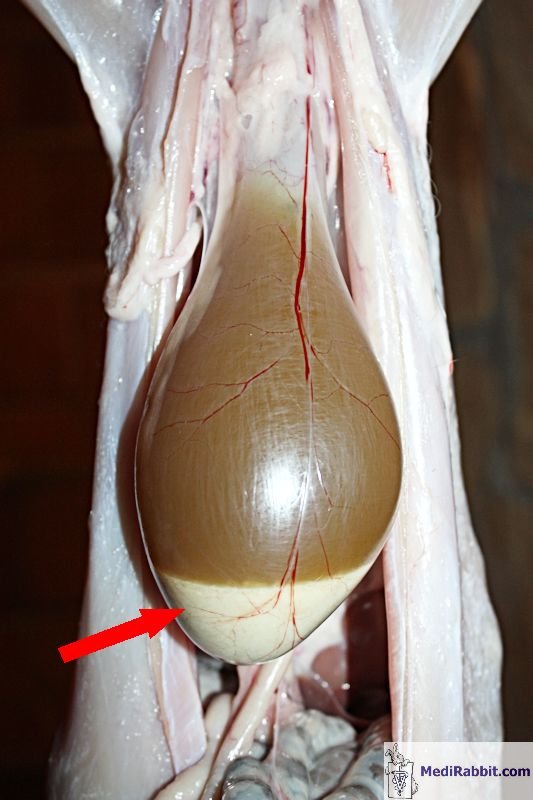Normal urine and “sludge” in rabbits
|
MediRabbit.com is
funded solely by the generosity of donors. Every donation,
no matter what the size, is appreciated and will aid in the continuing
research of medical care and health of rabbits. Thank you |
Healthy
rabbit urine
Rabbit urine always contains a certain
amount of sediments. This is absolutely normal, the system of rabbits works
this way to excrete the too much of calcium in their body.
MediRabbit Microscopic view of crystals contained in rabbit
urine The
absence of sediments in the urine is indicative of renal failure.
MediRabbit Different color of urine produced by
healthy rabbits. The red color is caused by the oxidation of plant pigments. Sludge
MediRabbit A thick paste that becomes a solid millimeter thick
“cake” when drying. Sludge can be
treated via a non-invasive procedure. An effective way of washing the bladder
without use of catheter, is the administration of
subcutaneous fluids, followed by a diuretic drug like furosemide by your vet.
One time is usually enough, it can be repeated in the next 24 hours. The administration of a small doses
of valium will relax the sphincter of the bladder and lead to the
voiding of this organ. Another way
is washing the bladder after introduction of a catheter. The procedure is
done on an anesthesized rabbit. Since the procedure
is accompanied by pain, the rabbit needs to be
given pain relief medication. A stone need to be removed surgically. The presence
of sediment in the bladder may be accompanied by urine retention. If the
amount of sediment is large, urination and complete voiding of the bladder is
difficult. The bladder gradually gets distended et its size becomes larger
and larger. In the picture of the male rabbit (below, right), the bladder
contains a certain amount of sediment.
Michel Gruaz Normal sized bladder (arrow) in a female rabbit
(left)et huge sized bladder in a male rabbit filled with a large amount of
sediment and urine (arrow) Uroliths
Calcium
and the formation of stones does not relate to the calcium in the diet only.
There is much more involved, that we do not understand yet. One cause of uroliths (stone) may be increased pH of the urine, for
some reason or another (e.g. diet, presence of bacteria). The increased urine
pH favors the development of bacteria and UTI. Bacteria in the bladder will,
on the other hand, start to excrete waste (ammonium) and an enzyme, urease
that will break down the urea; both will increases the pH of the urine. An
increased pH accelerates the precipitation of struvite crystal (struvite =
magnesium, ammonium, and phosphate). Struvite stones develop only in the
presence of an alkaline pH. Commonly found bacteria are E.
coli, Proteus sp and Staphylococcus
sp, rarely true anaerobic bacteria are found. The
presence of bacteria can be easily checked by sending a sample of urine for bacterial
culture (urine is normally sterile). One can also keep the removed urolith, open it, and use the central part for bacterial
culture or have the stone examined for the crystals composition. Indeed, some
bacteria are associated with a particular type (e.g. Staphylococcus is
associated to struvite stones).
C. Macey A 1.9 cm
bladder stone Photo: Hematuria (urine with
blood traces) Thick urine, the
presence of a bladder stone, a bladder or kidney infection, or infection of the
urinary or reproductive organs are usually accompanied by the presence of
blood spots in the urine.
MediRabbit Some dried blood in the urine circle
MediRabbit Heavy blood loss, caused by a cystitis in a female rabbit After taking X-rays of the
bladder, a vet may easily conclude that the rabbit has a huge bladder stone. Many
rabbits have been operated on, as a vet was convinced to find the stone, and
once the bladder open, nothing... Rabbit savvy-vet will know to differentiate
between a stone and the presence of sludge/sediments. For more details, see: "Nephroliths and Uroliths (calculi) in rabbits"Acknowledgements Huge thanks to Michel
Gruaz (Switzerland) and Christine Macey for their pictures and permission to
use in MediRabbit. |












